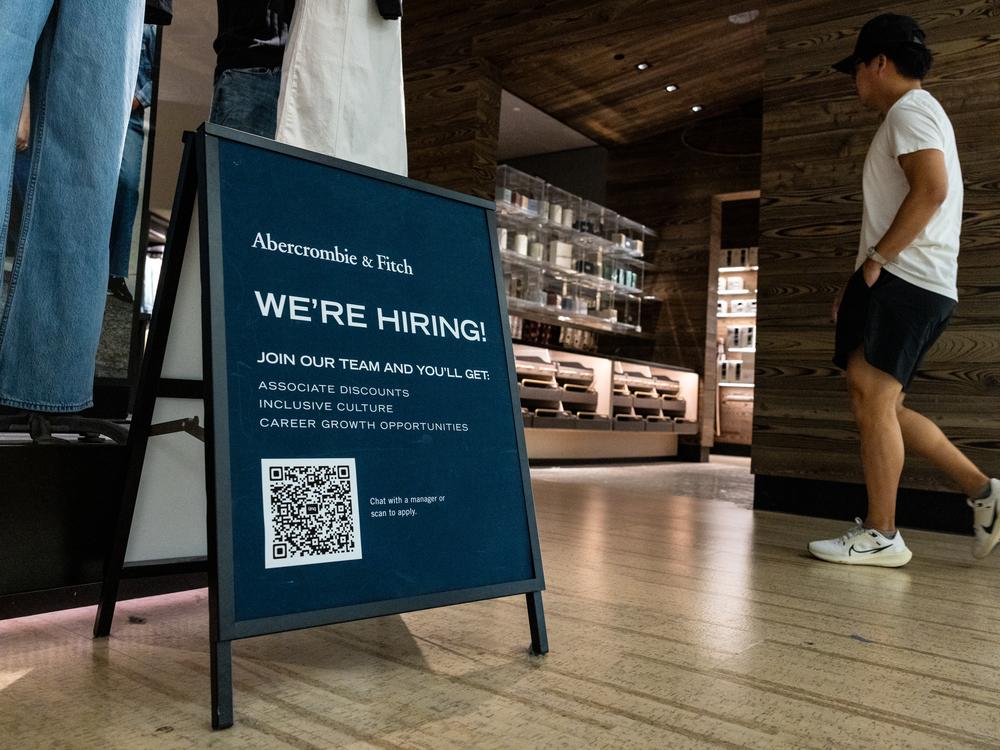Section Branding
Header Content
The U.S. saw stunningly strong growth in jobs last month. Here's what to know
Primary Content
As far as economic data goes, it was a bit of a stunner.
Economists had expected U.S. employers to have added about 150,000 jobs in September. Instead, they created more than a quarter-million jobs last month, while the unemployment rate fell to 4.1%, according to a report Friday from the Labor Department.
Here are five things to know about Friday's surprisingly strong jobs report.
Employers are still adding a lot of jobs
In total, the U.S. added 254,000 jobs in September. Restaurants, retailers and construction companies all added jobs at a healthy pace.
In addition, employment gains for July and August were revised upwards by a total of 72,000 jobs. That means that, on average, employers have added 186,000 jobs in each of the last three months.
While that's a slowdown from the first three months of the year, when employers added an average of 267,000 jobs a month, it's still a solid pace.
A separate report earlier this week also showed the number of job openings increased slightly in August to 8 million.
Some sectors are struggling
But not all industries are enjoying a boom. Manufacturing has been in a slump for most of the last two years. Factories cut 7,000 jobs in September, although factory employment is still higher than it was just before the pandemic, by 137,000 jobs. Most of September's job cuts were in the auto industry.
Loading...
A survey of factory managers released this week by the Institute for Supply Management shows manufacturers are still struggling with high interest rates and uncertainty about the upcoming presidential election.
By contrast, another ISM survey shows continued growth in the much-larger services side of the economy — things like restaurants and car repair.
The workforce is still growing
In order to keep adding jobs, employers need workers. Fortunately, the U.S. labor force continues to grow.
Friday's report shows 150,000 people joined or re-joined the workforce last month. Much of this growth is driven by immigration. The foreign-born workforce has grown rapidly over the last year, adding 1.4 million workers, while the native-born workforce shrank by nearly 600,000 workers.
Were it not for immigrant workers, job growth might well have stalled. The decline of the native-born workforce is primarily the result of baby boomers retiring. By contrast, the share of people in their prime working years (25 to 54) is near an all-time high.
There's more good news: Wages are going up faster than prices
Average wages in September were up 4% from a year ago. That's likely more than enough to outpace rising prices, giving workers a real boost in their purchasing power.
Inflation data for September won't be released until next week, but in recent months, prices have been climbing at a modest pace — 2.5% for the 12 months ending in August. In fact, wage gains have exceeded price hikes for fifteen months and September's increase probably extended that trend.
The Federal Reserve may be able to take its time in lowering interest rates
The Federal Reserve began cutting interest rates last month with an aggressive half-a-percentage-point move, signaling a turning point in its years-long battle against inflation.
But Fed chairman Jerome Powell says he and his colleagues may move more cautiously in the future, cutting rates by a quarter point at a time.
"This is not a committee that feels like it's in a hurry," Powell said Monday.
Loading...
Friday's surprisingly strong jobs report is likely to reinforce that patient approach. According to CME's FedWatch tool, odds of a quarter-point rate cut at the next Fed meeting rose to nearly 95% after the jobs report was released, from 68% the day before.
Fed policymakers will get one more monthly jobs report before their next scheduled meeting in early November.

